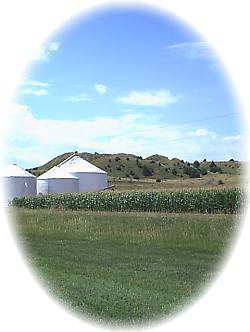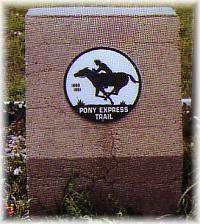Dawson County, NE
 Dawson County is located on what was the first transcontinental highway--the overland route to the west. The county was formed in 1871, just four years after the state joined the Union, March 1, 1867, and has played a major part in the development of Central Nebraska. The story of Dawson County's growth is important to you whether you live here, or in New York or California, Texas or Minnesota, because so much of our country's early history was shaped by the people who passed through here on the Oregon Trail, the Union Pacific Railroad, and later on the Lincoln Highway and U.S. Highway 30.
Dawson County is located on what was the first transcontinental highway--the overland route to the west. The county was formed in 1871, just four years after the state joined the Union, March 1, 1867, and has played a major part in the development of Central Nebraska. The story of Dawson County's growth is important to you whether you live here, or in New York or California, Texas or Minnesota, because so much of our country's early history was shaped by the people who passed through here on the Oregon Trail, the Union Pacific Railroad, and later on the Lincoln Highway and U.S. Highway 30.The Oregon Trail, the Overland Trail, and Routes of the Mormons--all passed through this valley enroute to the west, both sides of the river being used.
Aerial photographs still show the imprint of the wagon ruts in the fields south of the river. Although cultivation has erased most signs of the old Trails, the photographs still show them plainly, due to the different colors of dirt that blew into the old ruts. These will soon merge into other soil, obliterating the last visible vestiges of the old Trails, except for the very few original Pony Express Stations remaining.
The discovery of gold at Sutter's Mill, near what is now Sacramento, California, on January 24, 1848, touched off the greatest migration of history.
Paradoxically, the "Days of '49" really began in 1848. News spread slowly in those days, but travel was even slower.
But by 1849 the rush was on in earnest, and although the tide of immigrants diminished somewhat, it continued to flow up the broad Platte Valley until the completion of the transcontinental railroad, the Union Pacific, in 1868.
But even today the plains of the Platte continue to be the preferred route to -- and from -- the West. The Union Pacific is now flanked by Interstate 80 and Highway 30, while overhead fly the big airliners.
The early immigrants had the glitter of gold in their eyes, and failed to see the gold lying beneath the soil of the Platte Valley--the gold of agriculture and the water to make it pay.
Explore Dawson County
Sod House Museum
The award-winning Sod House Museum was established in Gothenburg in 1988
Gothenburg, NE MuseumsErnest A. Calling House
Ernest A. Calling, a pioneer businessman of Gothenburg, hired L.J. Anderson to build this distinctive Queen Anne style home in 1907. Born in Klipp, Sweden, in 1870, Calling emigrated to the United States in 1889
Gothenburg, NE National RegisterHistorical Markers
Three major pioneer trails, the Oregon, the Mormon, and the Chisholm, as well as the Pony Express went through the Cozad area.

100th Meridian Museum
The 100th Meridian Museum, located adjacent to the Henri Museum, houses the antique touring coach used by William Howard Taft and his family when they toured Yellowstone Park in 1907
Cozad, NE MuseumsFirst Presbyterian Church
In August of 1904, the ground on which the church now stands was purchased for the sum of $450. Ground was broken in August 1905 and the original building was competed in early 1907. At that time, the total cost of the building was $5,650. The beautiful stain glass windows are original.
Gothenburg, NE Historic ChurchesSwedish Crosses Cemetery
For over a century, three unique crosses have been a lasting symbol of the Swedish heritage of Gothenburg. In the early 1880s, Peter and Anna Berg, along with Anna'
Gothenburg, NE CemeteriesThe Country School
This one room country school was built around the year 1880, on a site nine miles north and west of the City of Cozad on land owned at that time by David Adle and Christiana Frost Adle. This school was called "The Adle School" because it was on Adle land, although it should have been called "
Cozad, NE Historic SchoolhousesCity Parks
Gothenburg has four parks covering 55 acres. Facilities include swings, picnic areas, pool, athletic fields, football stadium, ball parks, camping areas, and playground equipment. Two playgrounds in Gothenburg have all types of playground equipment. Lafayette Park:
Gothenburg, NE RV ParksPony Express Station
The Sam Machette Station was used as an early fur trading post/ranch house along the Oregon Trail southwest of Gothenburg before it was used as a Pony Express station during its operation between April 1860 and November 1861
Gothenburg, NE Pony ExpressRobert Henri Museum and Historical Walkway
The Henri Museum and Historical Walkway features mementos from the boyhood home of world famous artist Robert Henri, including original art and sketches.
Cozad, NE MuseumsUnion Pacific Depot
On October 15, 1866, the Union Pacific Railroad track laying crews reached the "100th Meridian"
Cozad, NE Railroad History